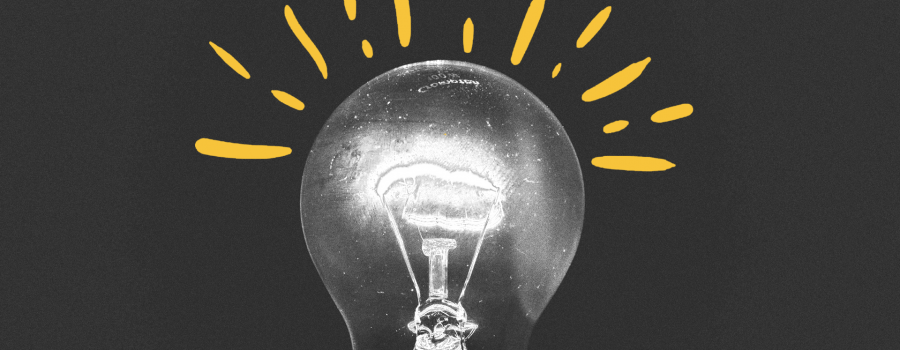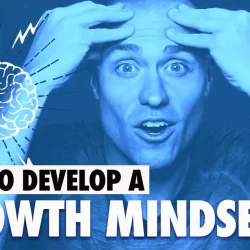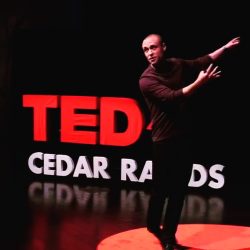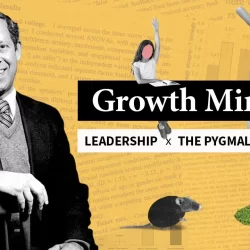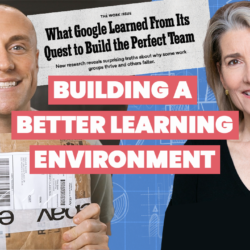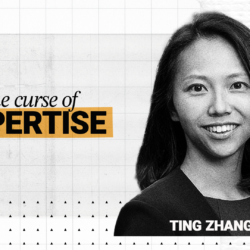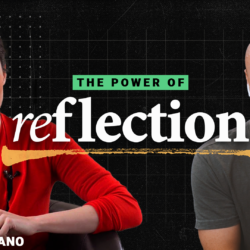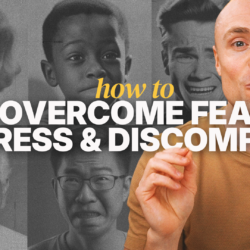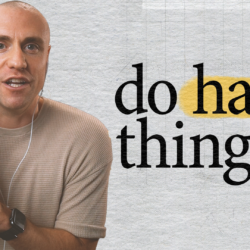If we zoom way out, the learning process looks something like this:
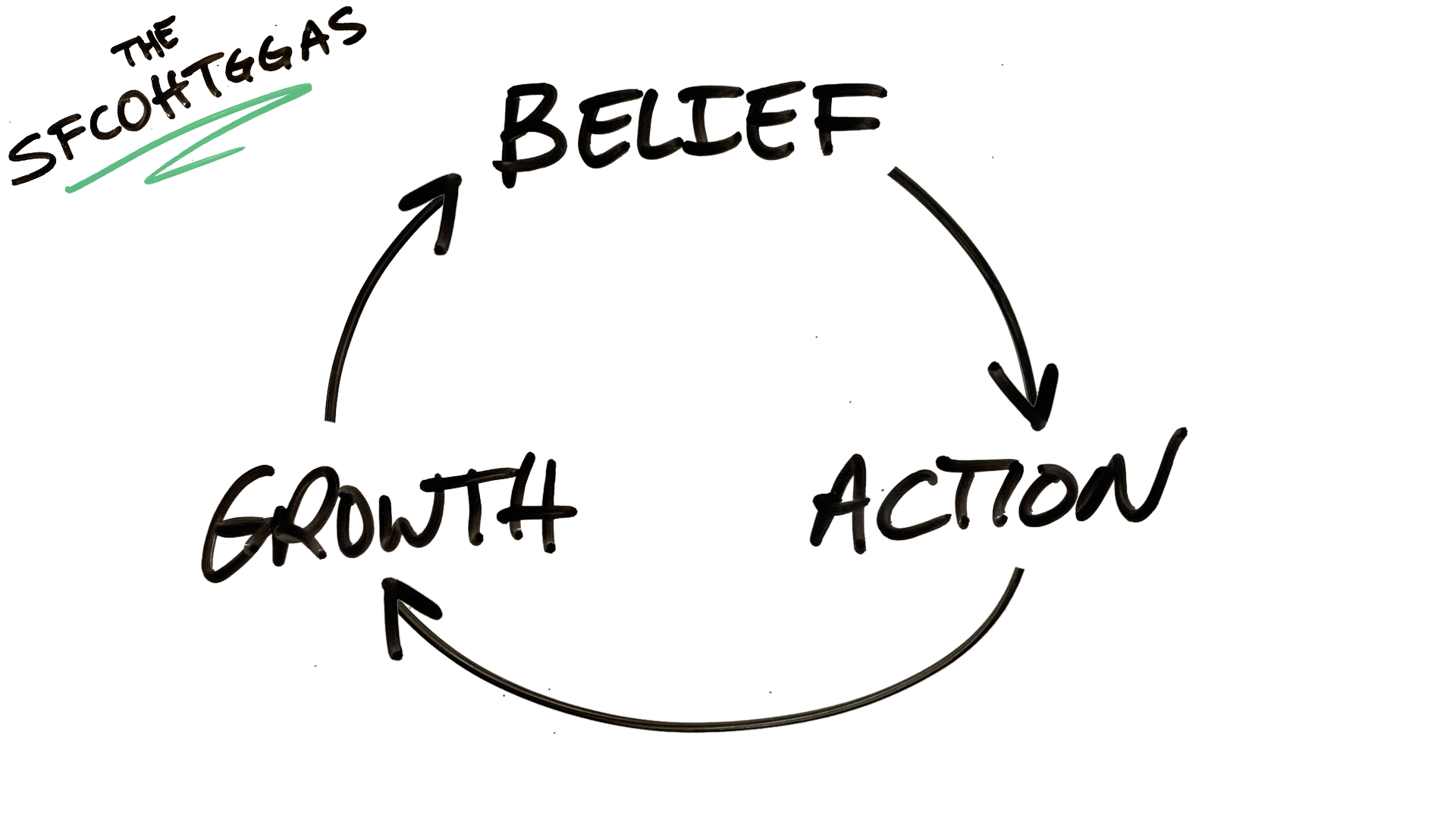
We call this the SFCOHTGGAS: The Self-fulfilling Cycle of How to Get Good at Stuff.
Yay for acronyms – woot! JK they’re the worst, but there’s a lot that this cycle can teach us about learning and how our mindsets can affect the process. The way it works is straightforward:
Belief fuels action. Action leads to growth. Growth reinforces the belief.
This cycle works for literally any skill, big or small.
Big: I believe I can learn math
Small: I believe I can learn that equation
Big: I can learn this new role
Small: I can learn this new software
Let’s take a trip through the cycle with a growth mindset belief: I believe I can learn x.
When the belief is in place, we’re more likely to take action.
The actions that create growth are obvious. If you were to ask a 5-year-old how to get good at something, they would probably tell you that you need to work hard, make mistakes, try different approaches, and listen to feedback…and they’re right.
If we spend enough time putting in the work, taking on challenges, learning from mistakes, and using feedback we’re most likely going to see some progress.
This progress can confirm AND strengthen our belief–“yup, I was right, I CAN learn”–and each time we go through the cycle, the belief gets stronger.
Example: Getting into shape
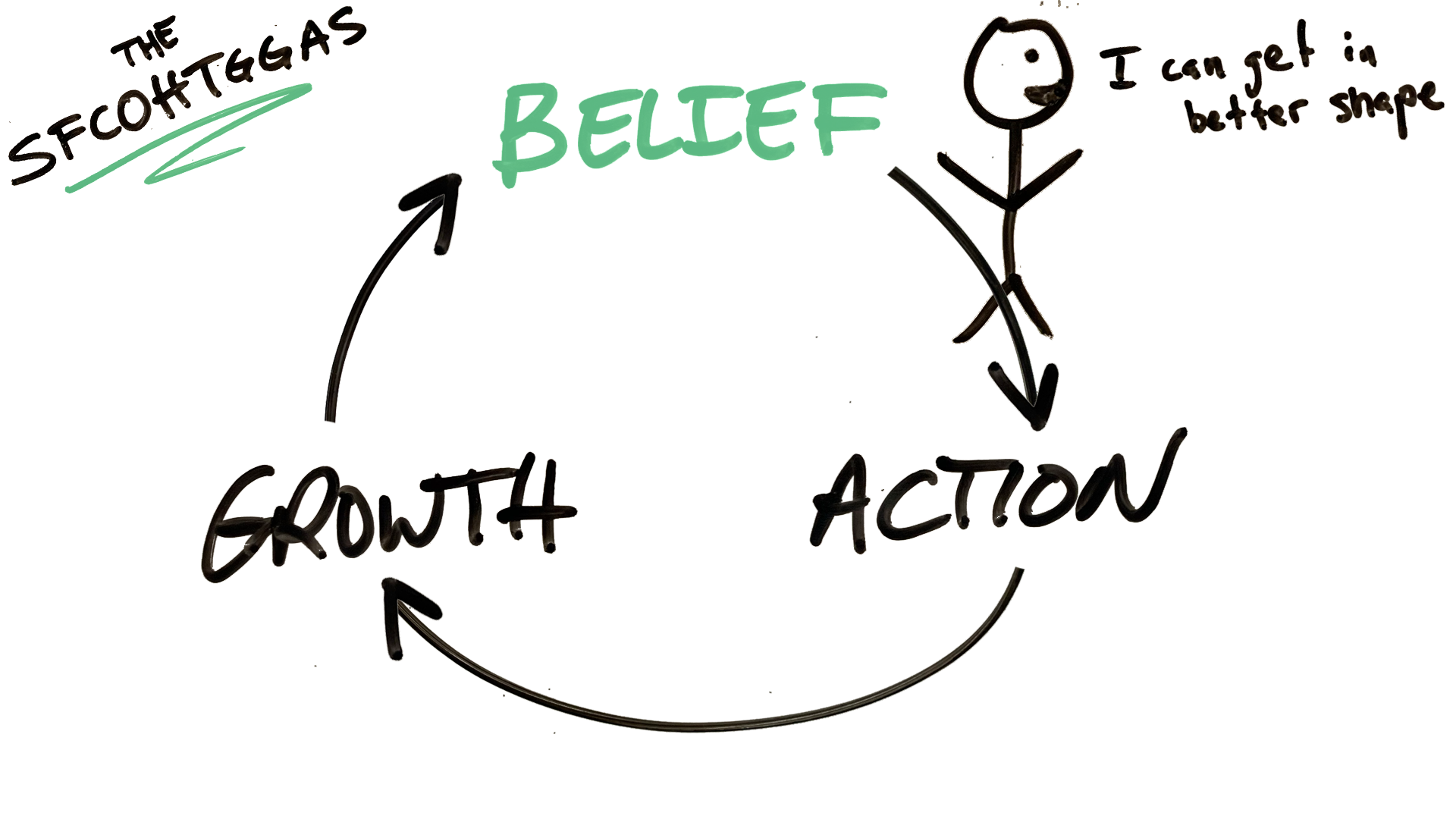
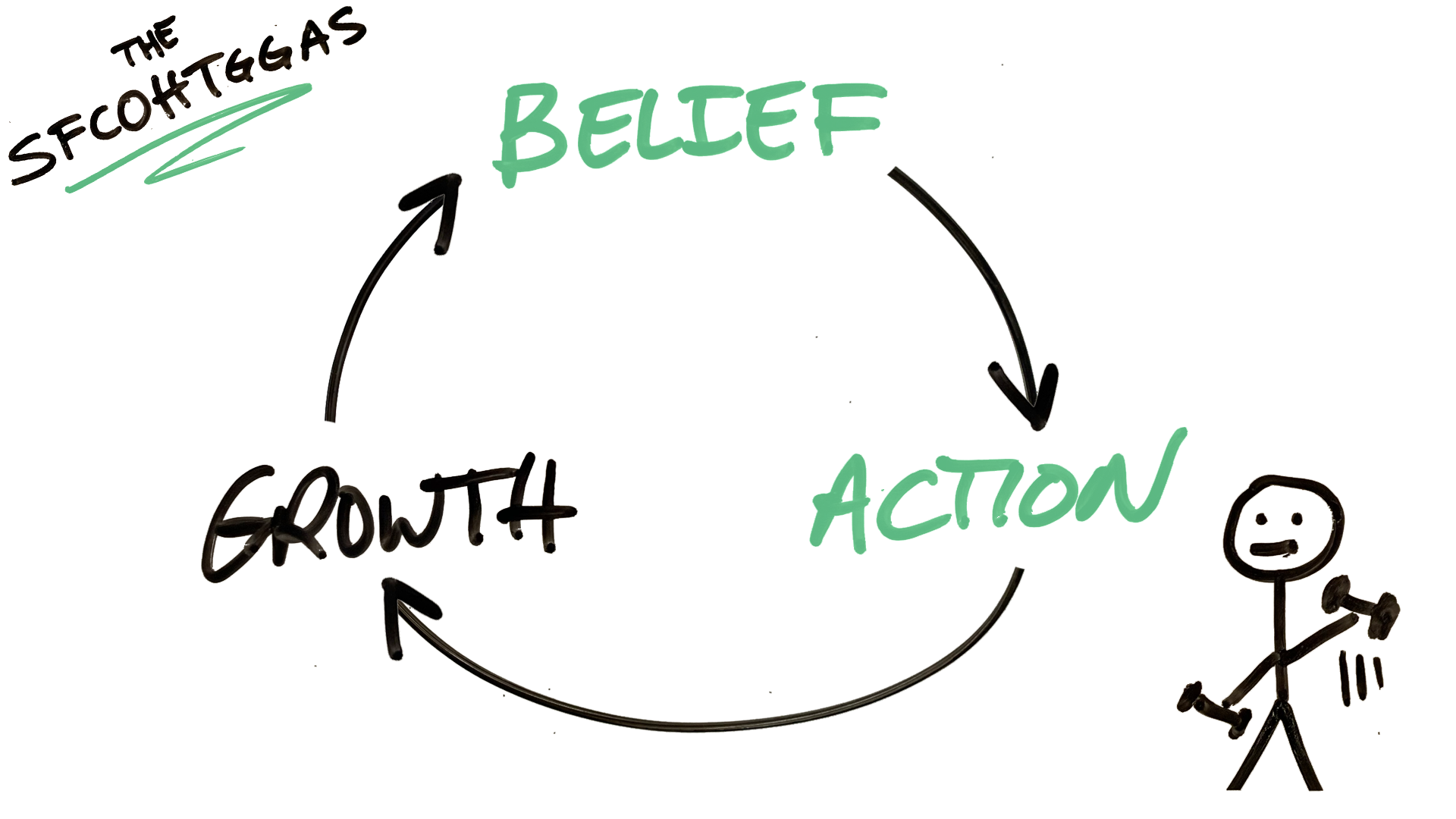
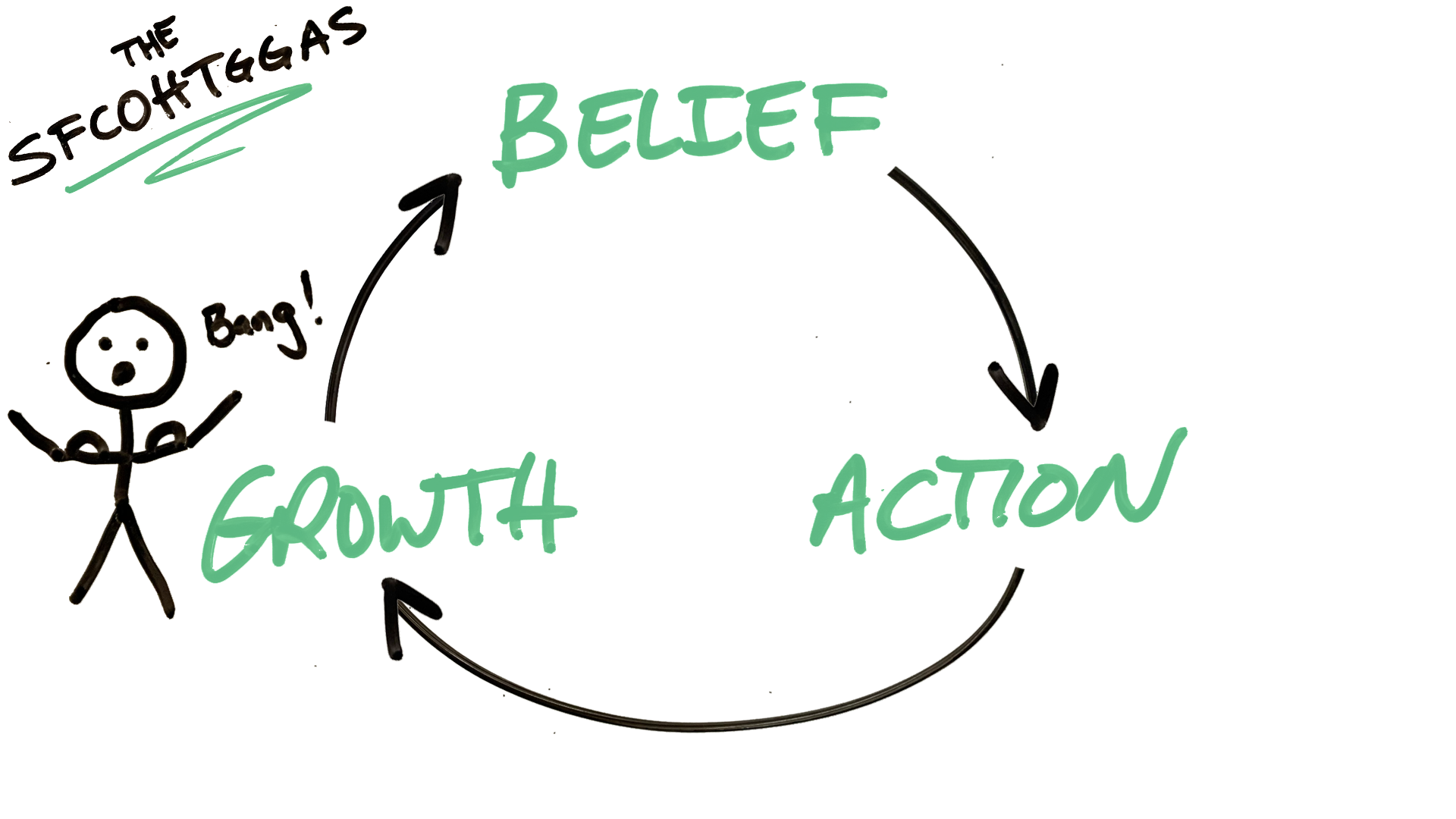
This progress confirms my belief, making it more likely that I’ll put in more action, and then see more progress – you get the picture.
The most compelling thing going on here is how self-fulfilling this cycle becomes. The belief becomes true.
People operating from a growth mindset believe they can learn – and then they become more likely to learn.
Please don’t get me wrong; I’m not saying if you just believe that it will magically happen. We still have to do the work and put in the action. Trust me, I spent a lot of time just believing that I could write this article, but nothing happened until I did the work.
Action is the key to growth, period.
But.
If we’re operating in a fixed mindset, the cycle works differently. Now at the top, we have our limiting beliefs: I can’t learn x.
“I’m not a math person.”
“I could never do that job.”
“Public speaking is not my thing.”
“I could never hit a curve.”
“I could never learn to jump serve.”
If I start with the belief that I can’t grow, I’m probably not going to put in much effort, probably not going to stick with a challenge, probably not going to be open to experimentation, probably not going to learn from obstacles and mistakes, probably not going to appreciate or use feedback.
Without the action, what do you think we see?
No progress.
This confirms AND strengthens our story: “Yup! I was right, I can’t learn.”
If the belief is gone, the cycle falls apart.
So the whole ‘getting into shape’ example would look like:
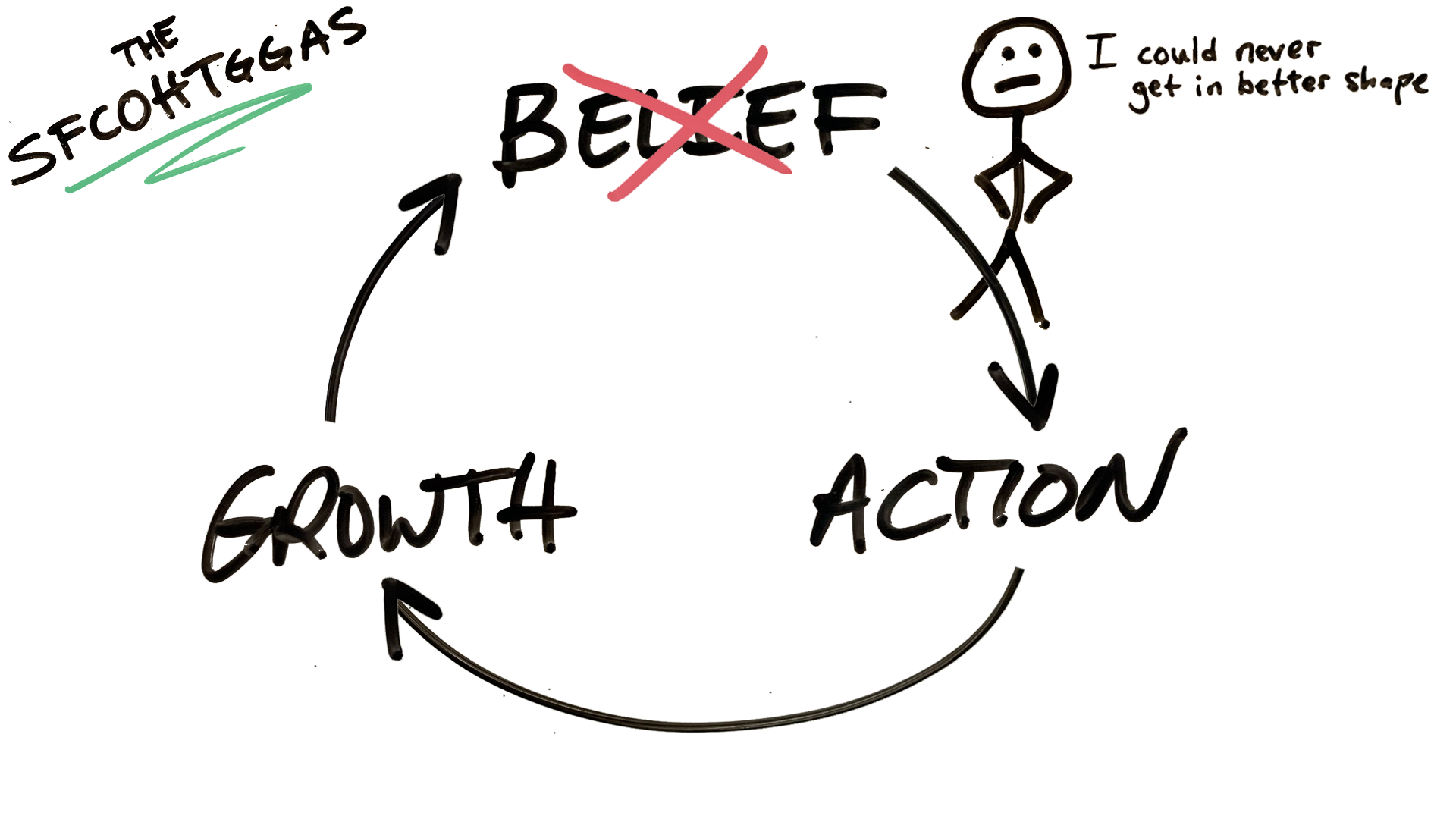
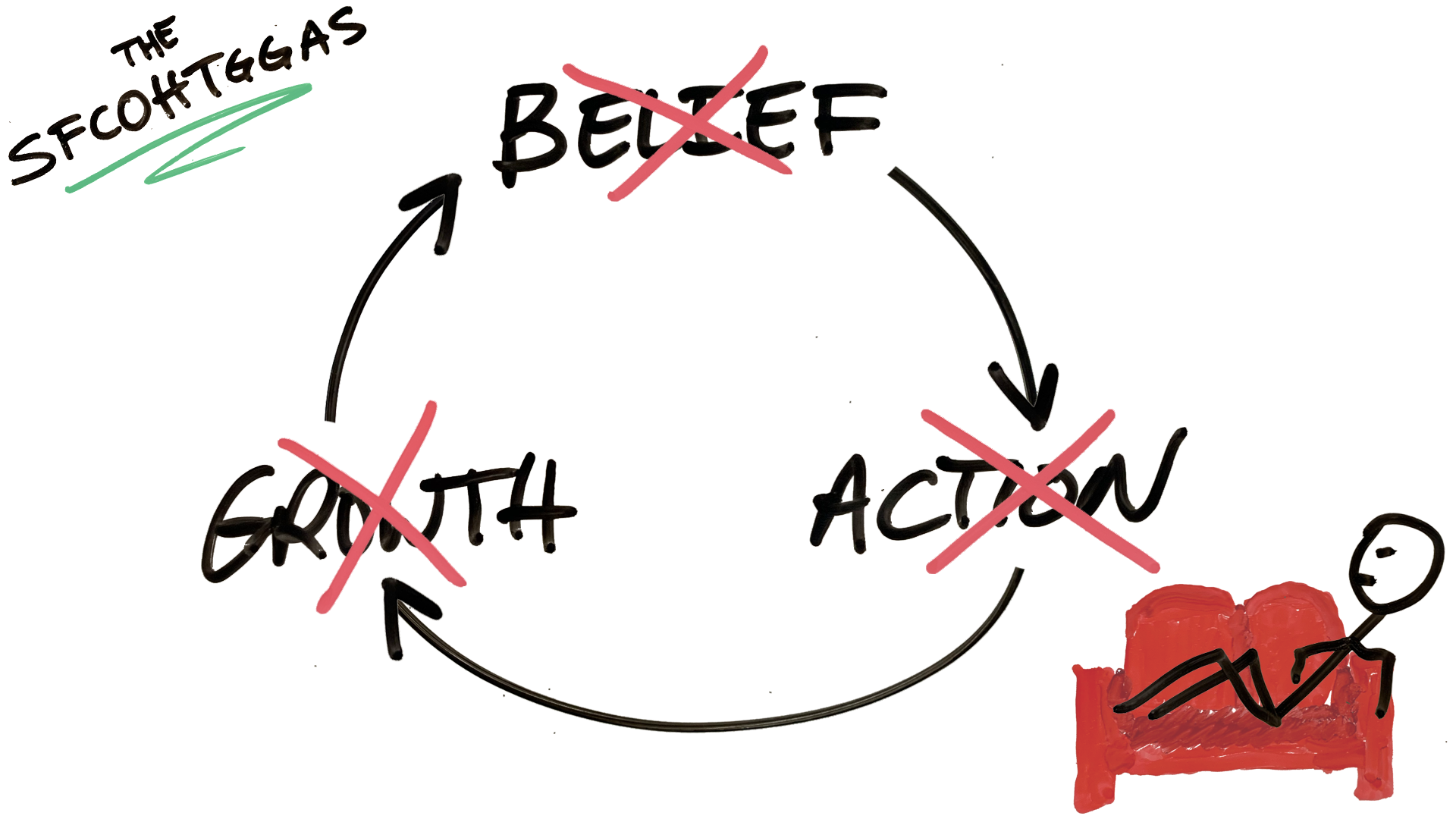
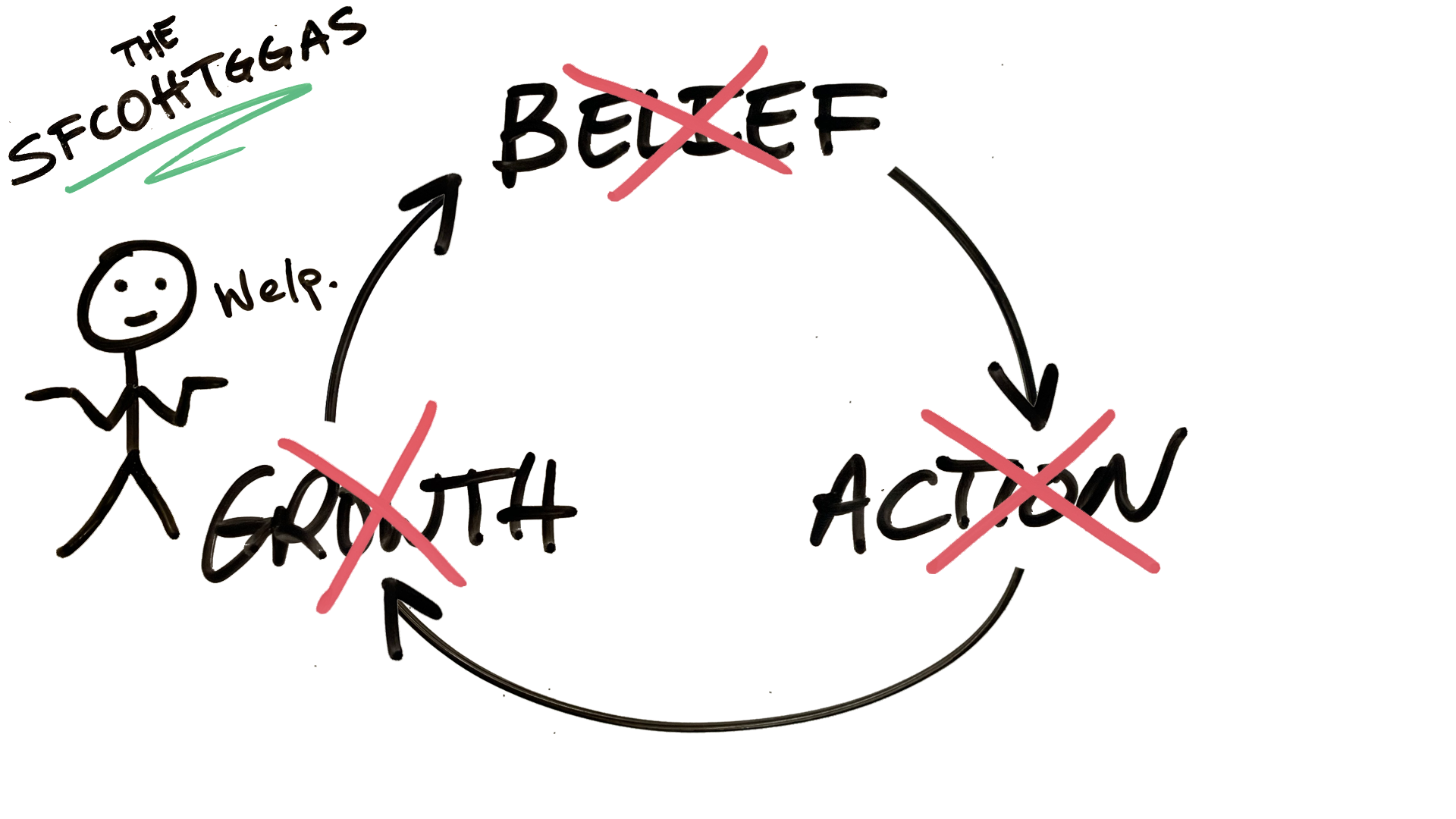
And that is the scary side of the cycle: the limiting beliefs are also self-fulfilling, they can become true.
This is why my grandma can’t use an iPhone…
Belief: There is NO way I could learn how to use that thing!
Action: Never tries
Growth: Nope. Still has a flip phone
She believes that she can’t, this limiting belief robs her of taking the action, so…she can’t (and still holds the limiting belief that she can’t).
But think about the millions of grandmas that can use iPhones. Did they just get lucky and were born with the smartphone skill that my grandma is missing? Probably not.
The difference is that they tried. And they tried because they looked at the situation with a little more curiosity and a growth mindset.
Belief: I can learn how to use a smartphone
Action: Opens phone up, sends you weird emoji texts
Growth: Yes. And the growth reinforces the original belief
It’s funny to make fun of my grandma, but we all do the same thing she does, with skills that are way more important than learning to use a smartphone.
These destructive stories and limiting beliefs are EVERYWHERE. Sometimes we tell them to ourselves, but more often than not they come from others.
What if I’m in 4th grade and a teacher or parent tells me: “Trev, you’re just not a math person.”
And I adopt that story…
Belief: I’m not a math person
Action: I check out during math class, I don’t really try with my homework or on tests
Growth: limited
The story robs me of the practice and reps – and again, it’s self-fulfilling – over time I become ‘not a math person.’
Replace math with literally any skill and the cycle plays out the same way.
Brene Brown and Elizabeth Gilbert – two heroes of mine – were on a podcast together and explained a similar concept that they called “creativity scars.”
They talked about how, when we’re young, sometimes we’ll make something or draw something and someone around us will make fun of it or tell us that we’re “not artsy” or “not creative.” We then adopt that story, which limits our actions, and most of us stop making, stop creating, stop drawing. By now you can finish the rest of this paragraph… Without the action we limit our creative growth, because a story we heard and internalized robbed us of the reps.
“I used to believe that there were creative people and there were non-creative people. And now I absolutely understand, personally and professionally from the data, that there are no such thing as non-creative people – there are just people that use their creativity and people who don’t.” – Brene Brown
Limiting beliefs come in all shapes and sizes. Sometimes it’s: “I can’t learn x” other times it’s: “I don’t need to learn x.”
I experienced both forms for about 3.5 years in college. My stories robbed me of so many opportunities to grow, my biggest being: “I don’t really need this. I’m just going to be a basketball coach when I’m done.”
I took classes in web design, graphic design, improv, entrepreneurship – really cool and important subjects – but my story was that I didn’t need them. This influenced my actions: I did the bare minimum. My plan was to simply pass the class (even if it was with a C-), get my credit, get my degree, and then go coach.
I would give anything to go take those classes again. And the really stupid thing is: even if I was going to be a basketball coach, those would have been useful skills.
But my story of “I don’t need this/I can’t learn this” robbed me of opportunities to take action and limited my growth. I bet in one way or another you can relate to my experience.
At this point most of us could give an accurate definition of both growth and fixed mindsets. But looking at them through the lens of this cycle gives us a deeper understanding of the mechanics of how they work.
Mindsets matter because they can either feed or impede our actions.
A few things we need to be clear on though:
– We all have hundreds of stories and we don’t have to change them all. But if there’s a story that’s getting in the way of something you care about, it’s probably worth getting to work on that one.
– Growth requires a lot of action. Sometimes progress is slow or limited.
– Sometimes that action step involves adjusting our strategies – not just putting in more time and effort. More on that here.
– There are many other things that can rob us of action. Fear is one of those things.
– There is NO such thing as just a growth mindset person or just a fixed mindset person. It’s a spectrum that can change by the day, the skill, the job, the situation, or even our mood. The idea is to be aware of the characteristics and language of the mindsets, which can help us identify which one we’re operating in.
– We don’t really control the things people say to us. But we can control whether or not we internalize the story. An important skill to develop is the ability to maintain a growth mindset, despite the things people say to us.
If we change our beliefs, we start to change the whole learning system. If the goal is to become a better learner, it’s a really good idea to build and reinforce our growth mindset beliefs. This video outlines three great ways to do that.

